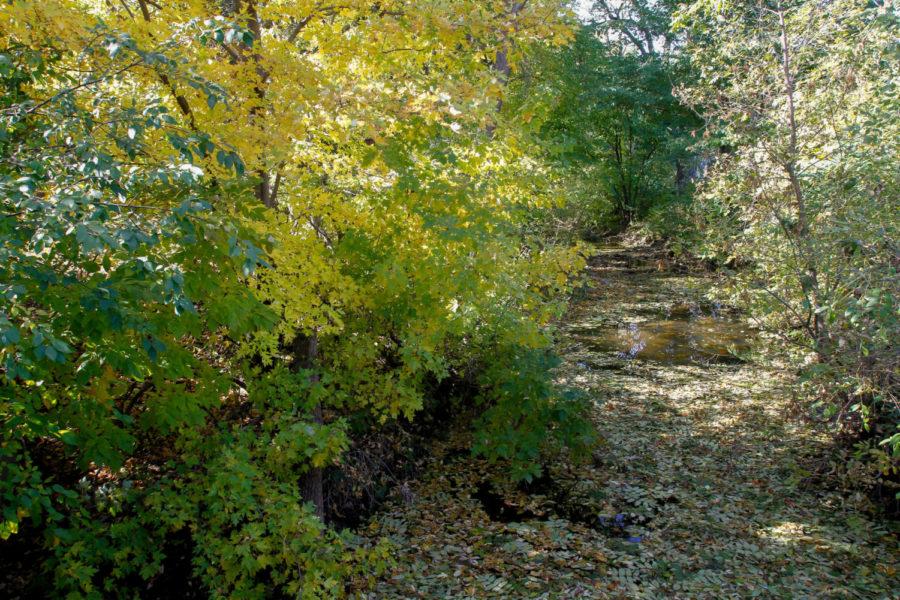Engineers for a Sustainable World to plant rain garden
Brian Achenbach/Iowa State Daily
Engineers for a Sustainable World is in the process of planning a rain garden in the space between Carver Hall and Music Hall to help with a drainage problem that causes pollution to accumulate in the creeks on campus.
October 27, 2013
Engineers for a Sustainable World has taken the initiative to keep Iowa State’s campus beautiful, while also helping to reduce pollution in campus’ streams and creeks.
According their website, Engineers for a Sustainable World at Iowa State is a part of a national organization that mobilizes engineering students and professionals through local and global service projects to apply engineering skills to sustainability related problems in the world.
“We meet as a general club but are really focused on getting our members involved in service projects,” said Sarah Maslo, club president. “We’re trying to keep the projects focused on sustainability.”
The organization is in the process of building a rain garden in the space between Carver Hall and Music Hall to help with a drainage problem that causes pollution to accumulate in the creeks on campus.
“Right now, there’s a problem where water will run off onto the sidewalk,” said Christina Larranaga, rain garden project leader. “So what a rain garden will do then is capture the water and bring it down to the water table instead of just letting it pool there and run off into Lake Laverne and not be able to be used”
The plot of land just north of Music Hall where the garden is located was given to Engineers for a Sustainable World by Iowa State’s facilities department. Every new plot of land that is going to be used on campus must first be approved by facilities, planning and management.
Originally, the plot of land for the garden was supposed to be near Frederiksen Court, but with all of the construction of the new parking lot going on around there, they decided the area would be too problematic.
Part of the reason they picked the plot of land that they did was because of water build up that would freeze and make for a hazard in the winter time, Larranaga said.
“The rain garden will reduce the amount of water that is going to be flowing over and with the colder weather like this, water freezing on sidewalks is hazardous,” Larranaga said. “So not only is it raising awareness about sustainability, naturally filtering the water, but also reducing that hazardous problem.”
The garden provides many benefits for campus other than just looking nice. Instead of the grass that is planted on the plot right now where the roots go two inches deep, the roots for the new plants that will be planted there will go about 15 feet deep.
With that, the plants will take the water directly into the water table, which is from where most people get their water. It will naturally filter the water supply.
Although the garden is still in the planning stages, Engineers for a Sustainable World still holds a weekly meeting, and of the 20 people in the club, about 10 to 12 people are involved with the planning committee.
The rain garden project is not the only project that the club is working on. Throughout the year, they will also be working on a solar street light to install on campus and a smart phone app that will help make students more aware of recycling areas on campus.
The anticipated planting date for the garden is April 19, 2014. If the first rain garden works out well, there are plans for possibly putting four or five more on different spots on campus.







